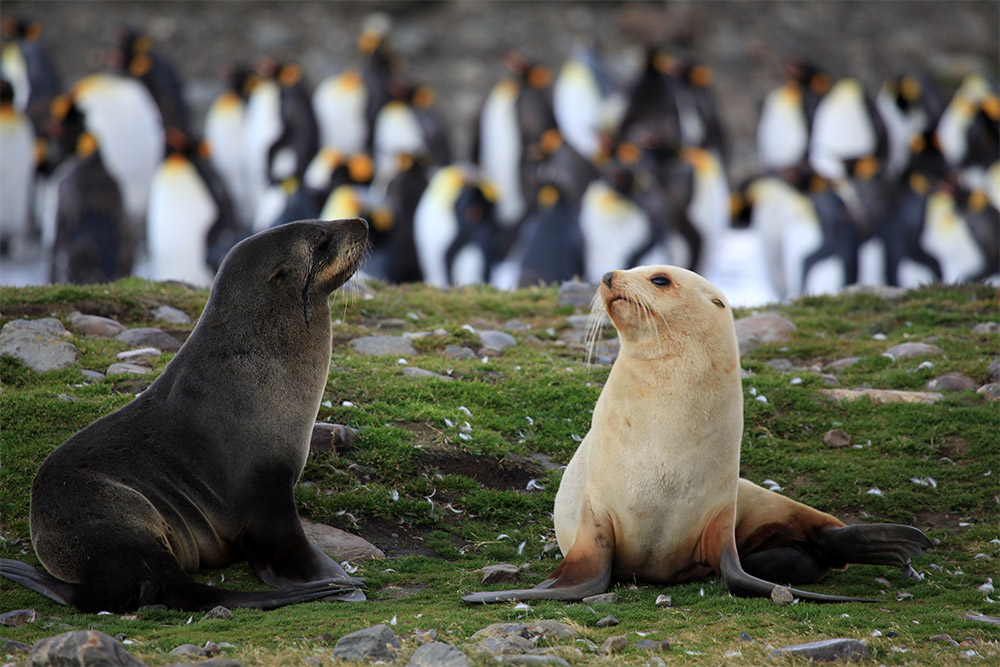Interfering With Nature's Designs
"Researchers recently studied three islands to record the effects of rabbit invasion [on the Kerguelen Islands]. The island of Grande Terre has many rabbits, while Ile Guillou’s rabbits were eradicated in 1994, and Ile Australia never had to contend with the beasties at all. In areas where rabbits thrived (and they did, without predators) native plant diversity declined and burrows made the land susceptible to erosion. In particular the researchers noted that soil fungi were very different on the two islands that had or have rabbits. Even 20 years after the rabbits left, Ile Guillou’s plant and fungal communities resembled that of Grande Terre.""The long-lasting effects could have come from disturbance of the soil through burrowing, rather than any specific rabbit-additions such as feces. A different disturbed soil site on Ile Australia showed some similarity to the soil fungal communities on the rabbit-affected islands. Native plants might be slow to grow back after such disturbance."Smithsonian"However, the study does point out that some subtle effects of an invasive species can persist for a long time after the problem animal or plant is gone. Helping an ecosystem recover from such a change may be trickier than previously thought."

"The big lesson is that sometimes we can have a strong human impact even in places that are very, very isolated."
"Our research shows that we absolutely have to act immediately. There is no lag time between the arrival of these invasives and the impact."
G. Francesco Ficetola, biologist, University of Milan
 |
| The European rabbit looks harmless, but in the Kerguelen Islands, the species became invasive. A new study finds that the effect of the rabbits on soil fungus lasts even long after they are gone. |
There is remote and isolated and then there is truly and really isolated-remote on this planet of ours. At one time Antarctica was the sole place left on Earth, an entire continent, that hadn't been 'discovered'. Its presence was known to whalers, but explorers from Britain and Norway had not yet set their sights on travelling to that remote region and undergoing privation in the extreme South Pole geography to map it out and discover the lay of the terrain, its mountains, glaciers and environmental conditions.
As it happens, there is a geographic area, one of isolated islands, discovered by a French expedition in the late 16th Century, acknowledged to be a French possession now, that was once a way-station for sealers and whalers and their hardy crews. Whales were once hunted for their baleen, the long bone-like structures through which they sift the marine life they scoop up as fodder for those great beasts; the baleen used for Victorian-era ladies' undergarment stays. Seals were traditionally hunted for food, household oil and sealskin garments by the Inuit, and in the 19th Century represented a much-in-demand European trade item.
On the Kerguelen Islands, literally at the world's end in the southern Indian Ocean between Madagascar and Antarctica, there is a research field station, and not much more, for its climate is extreme, and the landscape is unremittingly harsh and windswept. The islands’ average daytime high temperatures nudge at 11.5° C (about 50° F) including during the summer. It experiences, 300 days a year, rain, snow or sleet, and sustained winds of up to 150 kilometers per hour (93 mph). The environment is, to say the least, unforgiving.
But rabbits found it to their liking; once brought to the islands, purportedly in an effort to make the landscape more interesting, and possibly also to provide an alternate fresh food source for sealers and whalers, who made the islands a way-station; rabbits thrived and proliferated, and in so doing, like any introduced species alien to the environment, found no natural enemies and sufficient nutrition growing out of the soil to sustain their colonies, and then some.
/https://public-media.smithsonianmag.com/filer/a2/1b/a21b3dd1-86df-4330-b746-2c4bf21c6604/1280px-wild_rabbits_at_edinburgh_zoo.jpg)
Scientists, in 1974, who felt the remote archipelago represented a promising spot from which to observe the transit of Venus as it regularly passed before the sun, installed an observatory on the 93-mile-wide Grande Terre, the main island. They too were linked with bringing rabbits with them, an estimated five; again as a potential food source for the future. By the time the researchers left the island, the rabbits had begun their work of reproducing in sufficient numbers to alter the ecosystem.
That, in any event is what a report recently published in the journal Science Advances, has noted, based on sediment cores drilled from a small lake in Grande Terre's central plateau. The question of how invasive species change ecosystems intrigued the scientists who examined those cores, and the Kerguelen Islands represented a natural laboratory, distant from civilization and its presentation perfect for investigation.
The biologists extracted DNA from the sediment cores and pieced together a timeline of what lived on the island over the course of hundreds of years, with the genetic data indicating the central plateau of Grande Terre with a stable ecosystem until about 1940, when the rabbits reached that area on the main island. A cushion-like plant named Azorella Selago dominated the area originally, but with the introduction of rabbits, the presence of native plants diminished and erosion began its destructive work.
Now, to add to the severely deleterious effect of the exploding rabbit population, climate change has also entered the picture, to impact doubly negatively on the original ecosystem. Dr. Kerguelens points out that what happens on an isolated group of islands is reflected by alterations in ecosystems throughout the entire planet; with the arrival of invaders, normalcy and stability erode.
 |
| The Kerguelen Islands are an important breeding ground for Antarctic Fur Seals. Credit: Liam Quin |
Labels: Bioscience, Ecosystem, Environment, Invasive Species

0 Comments:
Post a Comment
<< Home